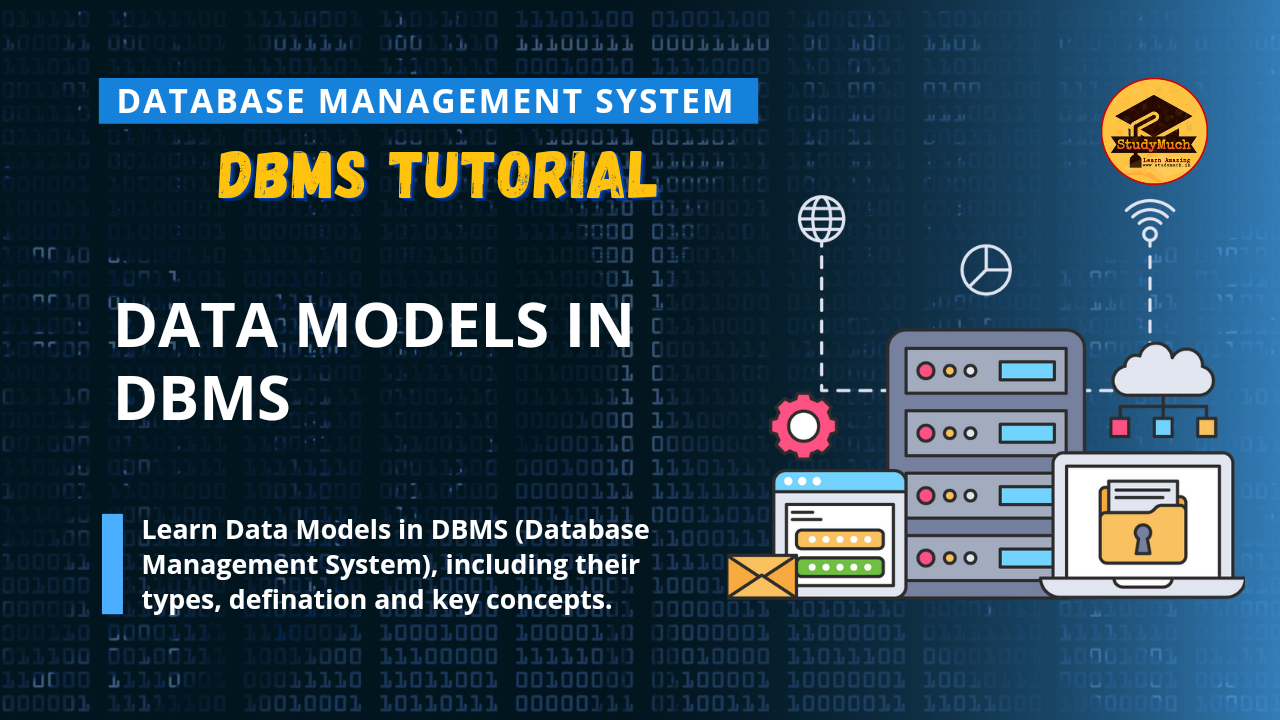Data Models in DBMS

Data Models in DBMS
In the world of databases, data models play a crucial role in defining how data is stored, organized, and processed. A data model serves as a blueprint for structuring data and determines how data is represented and manipulated within a Database Management System (DBMS). In this blog post, we will provide a comprehensive overview of Data Models in DBMS, including their types, definitions, and key concepts.
What is a Data Model?
A data model is a conceptual representation of how data is structured and organized in a database. It defines the rules and conventions for representing and manipulating data, and provides a high-level abstraction that allows users and developers to understand and interact with the database in a meaningful way.
Data models are used to describe the structure, relationships, and constraints of data in a database. They provide a standardized way of representing data, which allows for efficient data storage, retrieval, and manipulation. Data models also serve as a communication tool between different stakeholders, such as database designers, developers, and end-users, helping them to understand and work with the data in a consistent and organized manner.

Types of Data Models
There are several types of data models commonly used in DBMS. Let’s take a closer look at some of the most popular ones:
Hierarchical Data Model: In this model, data is organized in a tree-like structure, where each record has a parent record and zero or more child records. The parent-child relationship is defined by a one-to-many relationship, where each parent record can have multiple child records, but each child record can have only one parent. This model is commonly used in legacy systems and is not widely used in modern databases.
Network Data Model: Similar to the hierarchical data model, the network data model also organizes data in a tree-like structure. However, in this model, a child record can have multiple parent records, and the relationships between records are defined by complex links. This model allows for more complex relationships between records, but it is also less commonly used in modern databases.
Relational Data Model: The relational data model is the most widely used data model in modern databases. In this model, data is organized into tables with rows and columns, where each table represents an entity or a relationship between entities. Tables are related to each other through keys, such as primary keys and foreign keys, which define the relationships between records. This model is based on set theory and allows for flexible and efficient data manipulation.
Entity-Relationship (ER) Data Model: The ER data model is a high-level conceptual data model that is used to represent the relationships between entities in a database. It uses entities to represent real-world objects, attributes to represent the properties of objects, and relationships to represent the associations between objects. ER diagrams are commonly used to visualize and design database schemas before implementing them in a specific DBMS.
Object-Oriented Data Model: The object-oriented data model is designed to handle complex data types, such as multimedia objects, and allows for more advanced data modeling and manipulation. In this model, data is organized as objects, which can have attributes and methods, similar to objects in object-oriented programming. This model is commonly used in specialized applications, such as multimedia databases and scientific databases.
NoSQL Data Models: NoSQL (Not Only SQL) databases use various data models that are different from traditional relational models. Examples of NoSQL data models include document, columnar, key-value, and graph data models. These data models are designed to handle large-scale data, unstructured data, and distributed data, and are commonly used in modern web applications, big data analytics, and real-time data processing.

Conclusion
The hierarchical and network data models are mostly prevalent in older systems and are utilized less frequently in contemporary databases. Due to its adaptability and effectiveness in data management, the relational data model, which is based on tables with rows and columns, is the one most frequently employed in modern databases. The ER data model, a high-level conceptual model frequently used in creating database schemas, focuses on capturing the connections between items. Specialized applications employ the object-oriented data paradigm, which is made to handle complicated data types. Modern online applications and big data analytics use NoSQL data models, such as document, columnar, key-value, and graph data models, to handle enormous amounts of dispersed, unstructured data.
It’s crucial to carefully select a data model that fits the needs and features of the data and the application while creating a database. The design and implementation of a reliable and effective database system can be substantially aided by having a thorough understanding of the many types of data models and their definitions.
Data models are fundamental to understanding and designing databases in DBMS. They provide a conceptual representation of how data is structured and organized, and define the rules for representing and manipulating data. In this blog post, we discussed several types of data models, including the hierarchical, network, relational, ER, object-oriented, and NoSQL data models.
So, in this blog post you have learned Data Models in DBMS (Database Management System). I hope you have leaned better and if you have any doubt regarding this tutorial then you can ask in the comment section.
Read Related;



0 Comments